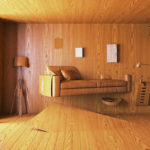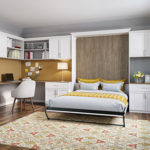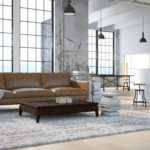At its core, the word ‘contemporary’ means ‘of the moment,’ which makes this style particularly hard to define. Dating back to the 1970s, this style is unique because it borrows elements from many other aesthetics. In it, you can see nods to modern, traditional, art deco and even futuristic design.
The other defining point of contemporary design is that it’s constantly evolving. Unlike other styles which are more or less set in stone, what’s ‘of the moment’ today may change in a few years’ time. Today, the look is defined by curved lines, neutral colors and minimalism, but it may look slightly different in the future.
Interior Designing is not a new profession. Although some may claim that it only came into existence about a century ago, Interior Designing has always been prevalent. Furnishings have required to be adorned in upholstery fabric since the day people understood what furnishing was.
Interior Design does not only involve furnishing fabrics, or an understanding of fine furnishings , it also involves having an awareness of spaces, colour and sustainability. Proper space planning is essential. Interior design is all about how we experiment with spaces. It’s a powerful, essential part of our daily lives and affects how we live, work, play, and even heal. Comfortable homes, functional workplaces, beautiful public spaces-that’s interior design at work. It enhances the look of the furnishings, and improves the appeal of the colour and designs of the fabrics as well.
The evolution of Interior Design has been interesting. In the early 20th century, the designs were predominantly Victorian style, and were characterized by rooms decorated with heavy drapery, Victorians, overstuffed furniture and dark colors. This is the time when the profession of Interior Design had started to gain recognition, and had started to get accepted worldwide.
In an era where interior design has become a medium to express oneself via home furnishings its very important to accessorise space properly to increase the asthetics of the place.








